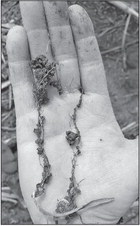A new vision for agriculture?


Agriculture has been in a tough places for years and now, with the coronavirus, there’s fear commodity prices will once again slip. Could now be the time that agriculture comes u...


Agriculture has been in a tough places for years and now, with the coronavirus, there’s fear commodity prices will once again slip. Could now be the time that agriculture comes u...